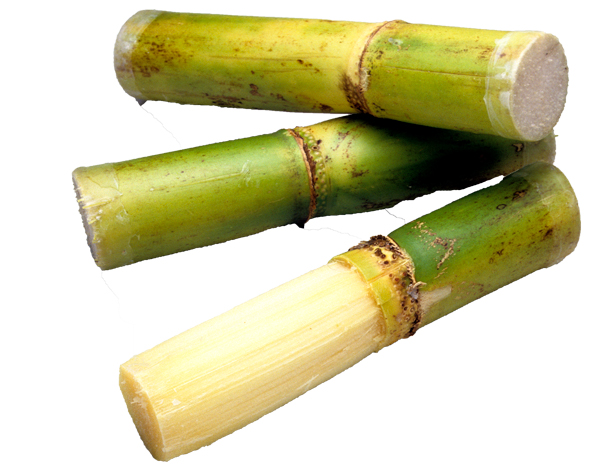The Environmental Impact of Growing Sugar and Cane in Various Regions
Wiki Article
Why Cane Sugar Handling Chemicals Are Essential for Modern Sugar Refining
The function of walking stick sugar processing chemicals in modern-day sugar refining can not be overemphasized, as they are integral to improving both the effectiveness of removal and the total high quality of the last item. Representatives such as phosphoric acid and specific flocculants are used to remove contaminations, resulting in sugar that not just fulfills customer assumptions however additionally sticks to sector criteria.Role of Processing Chemicals
The efficiency of cane sugar handling pivots significantly on the calculated application of processing chemicals. These chemicals play a crucial duty in boosting the efficiency and quality of sugar extraction and refining. From the first phases of juice extraction to the final purification actions, processing chemicals help with different important procedures.In the extraction stage, chemicals such as phosphoric acid and calcium hydroxide are used to enhance the information process, aiding to remove contaminations and suspended solids from the cane juice. This not only boosts the yield yet additionally makes sure the clearness of the last item. Furthermore, agents like flocculants help in the fast settling of impurities, therefore simplifying the general process.
Triggered carbon and ion exchange materials serve to eliminate color and odor, ensuring that the refined sugar fulfills consumer high quality standards. Therefore, the precise selection and application of these chemicals are essential for achieving ideal results in cane sugar handling.
Trick Sorts Of Chemicals
Walking stick sugar handling depends on a range of key chemicals that promote each phase of production. These chemicals play essential roles in clarifying, bleaching, and purifying the sugar drawn out from walking stick.One key group of chemicals consists of flocculants, such as polyacrylamide, which aid in the explanation process by promoting the aggregation and settling of pollutants. Furthermore, calcium hydroxide is commonly used to neutralize level of acidity and help in the elimination of non-sugar elements.
Bleaching agents, such as activated carbon and sulfur dioxide, are used to decolorize the syrup, resulting in a clearer last item. These chemicals assist get rid of color compounds that may affect the sugar's appearance and bankability.
Furthermore, phosphoric acid offers as a pH regulatory authority throughout the handling stages, guaranteeing optimal conditions for the enzymatic tasks entailed in sugar removal and purification.
Various other important agents consist of edta (ethylenediaminetetraacetic acid), which chelates steel ions that can catalyze undesirable responses, and sodium hydroxide, which helps in pH control throughout the refining process. Jointly, these chemicals improve effectiveness and make sure a high-grade walking stick sugar product.
Benefits for Sugar Quality
Often forgotten, the use of details processing chemicals significantly improves the overall high quality of walking stick sugar. These chemicals play an essential role in refining processes, making sure that the final item meets strict industry standards for purity and taste.
In addition, refining chemicals assist in achieving a consistent granulation and structure, which are vital for consumer approval. By controlling the crystallization procedure, these chemicals make visit the site sure that the sugar crystals develop consistently, causing a more appealing item that liquifies well in numerous applications.
Furthermore, the use of these chemicals can improve the shelf life of walking stick sugar by reducing wetness absorption and microbial growth. In general, the calculated application of processing chemicals is essential for delivering top quality walking cane sugar that satisfies customer expectations and market needs.
Ecological Effect Considerations

Furthermore, the energy-intensive nature of sugar refining, intensified by chemical use, usually results in increased carbon exhausts. This adds to environment adjustment and elevates problems concerning the sustainability of current refining techniques. Additionally, the sourcing of these chemicals may include practices that threaten biodiversity, such as monoculture farming, which reduces the durability of farming environments.

To reduce these impacts, sugar refiners are progressively discovering lasting choices and embracing best practices that reduce chemical use. Implementing rigorous ecological administration systems can help make certain that the refining process lines up with environmental requirements and promotes biodiversity. Ultimately, a well balanced technique that focuses on both sugar quality and ecological stewardship is essential for the lasting feasibility of the sugar industry.
Future Patterns in Refining
As the sugar industry grapples with the ecological obstacles related to typical refining approaches, ingenious strategies are emerging to boost both effectiveness and sustainability. One substantial pattern is the fostering of eco-friendly chemistry principles, which prioritize using safe, naturally degradable processing chemicals. This shift not just lessens ecological influence however also addresses consumer demand for cleaner production methods.An additional appealing development is the implementation of sophisticated filtering technologies, such as membrane splitting up and adsorption procedures. These strategies boost the clearness and high quality of the sugar while minimizing the quantity of wastewater created during refining. Additionally, the integration of electronic modern technologies, including IoT and AI, is transforming operational effectiveness by making it possible for real-time tracking and anticipating upkeep, thus lessening source waste.
In addition, the use of by-products from sugar refining, such as bagasse and molasses, is getting traction. These materials can be exchanged biofuels or value-added items, contributing read to a round economic climate within the sector. Collectively, these fads indicate a change in the direction of more sustainable methods that not just boost operational performance but likewise line up with international sustainability goals, ensuring the future feasibility of sugar refining.
Conclusion
Walking cane sugar processing chemicals are vital in contemporary sugar refining, significantly enhancing the performance and top quality of sugar removal. The tactical use these chemicals not only enhances the purity and flavor of the last product yet additionally ensures constant crystallization and appearance. As the industry significantly prioritizes sustainability, the fostering of environmentally-friendly processing representatives is likely to form future patterns in refining, eventually resulting in better items and prolonged shelf life for customers.
Eventually, a well balanced technique that focuses on both sugar quality and ecological stewardship is essential for the long-lasting feasibility of the sugar market.
Cane sugar processing chemicals are necessary in contemporary sugar refining, substantially improving the efficiency and quality of sugar extraction.
Report this wiki page